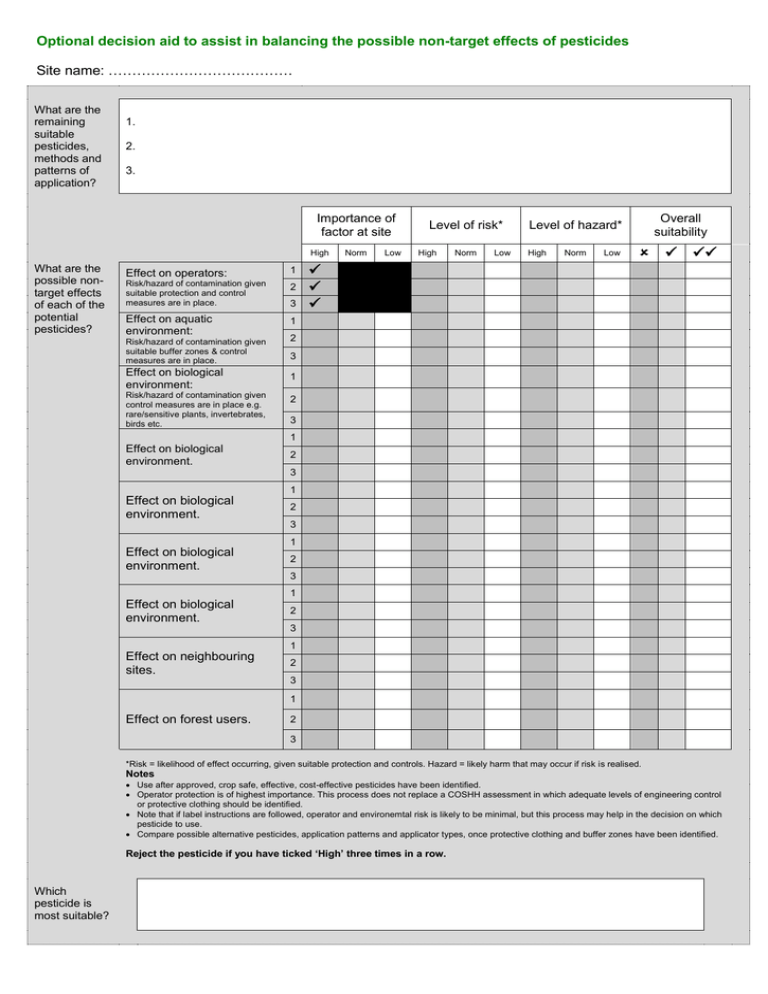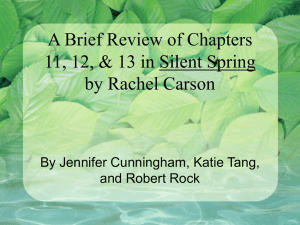advertisement

Optional decision aid to assist in balancing the possible non-target effects of pesticides Site name: ………………………………… What are the remaining suitable pesticides, methods and patterns of application? 1. 2. 3. Importance of factor at site High What are the possible nontarget effects of each of the potential pesticides? Effect on operators: 1 Risk/hazard of contamination given suitable protection and control measures are in place. 2 Effect on aquatic environment: 1 Risk/hazard of contamination given suitable buffer zones & control measures are in place. Effect on biological environment: Risk/hazard of contamination given control measures are in place e.g. rare/sensitive plants, invertebrates, birds etc. 3 Norm Low Level of risk* High Norm Low Overall suitability Level of hazard* High Norm Low 2 3 1 2 3 1 Effect on biological environment. 2 3 1 Effect on biological environment. 2 3 1 Effect on biological environment. 2 3 1 Effect on biological environment. 2 3 1 Effect on neighbouring sites. 2 3 1 Effect on forest users. 2 3 *Risk = likelihood of effect occurring, given suitable protection and controls. Hazard = likely harm that may occur if risk is realised. Notes Use after approved, crop safe, effective, cost-effective pesticides have been identified. Operator protection is of highest importance. This process does not replace a COSHH assessment in which adequate levels of engineering control or protective clothing should be identified. Note that if label instructions are followed, operator and environemtal risk is likely to be minimal, but this process may help in the decision on which pesticide to use. Compare possible alternative pesticides, application patterns and applicator types, once protective clothing and buffer zones have been identified. Reject the pesticide if you have ticked ‘High’ three times in a row. Which pesticide is most suitable?





